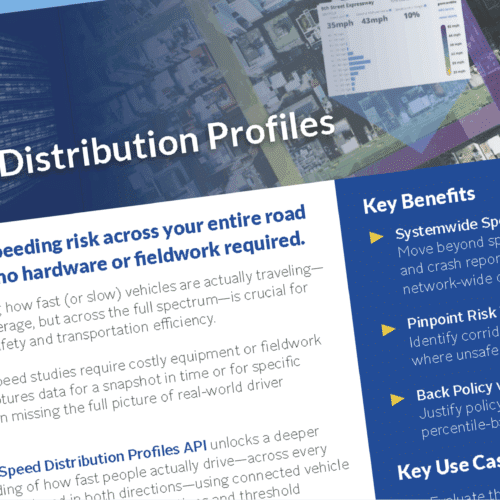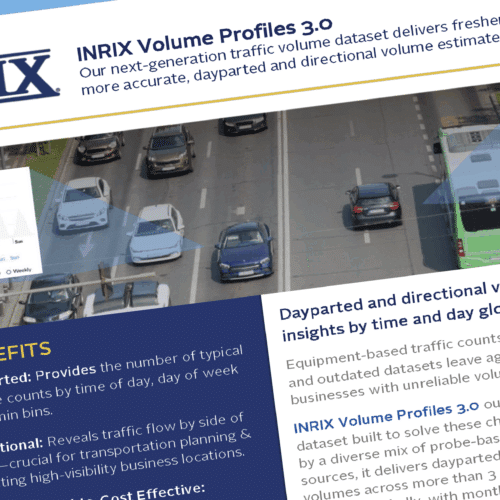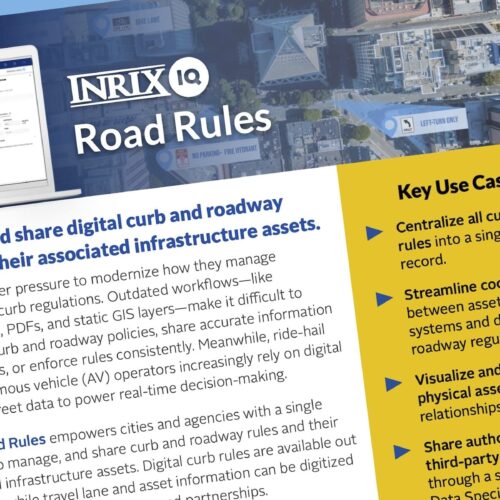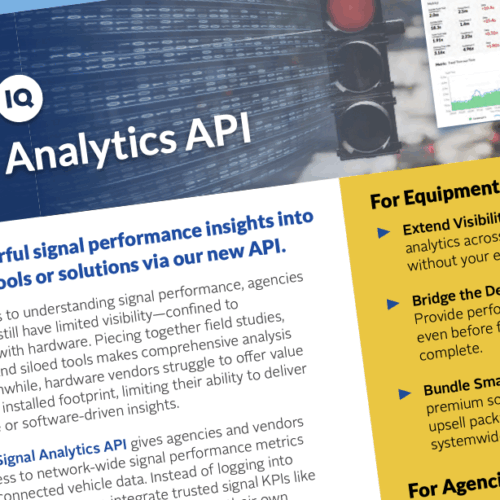
INRIX Smart Alerts
Cloud-based Driving Alert Service that Helps Drivers Avoid Dangerous Situations Even if Navigation is Off
Easily Improve Your Vehicles’ SafetyAn Intelligent Driving Alert Service That Saves Lives, Time, and Fuel
Smart Driving Alerts utilizes probe data to identify traffic-related problems on freeways then calculates precisely which vehicles should be sent an alert. The driving alert service is easily available for any vehicle and requires no data purchase or navigation system.
Benefits:
Countless traffic events happen every day. INRIX Smart Alerts knows what events matter to each driver.
- Simple and economical to deploy
- Filters out everything that does not matter
- Alerts are automatic. No action required by the driver
- Give drivers the ability to make informed decisions
Sign Up for a Free Smart Alerts Demo
Parking Rules
Smart Alerts leverages INRIX’s comprehensive parking data to inform drivers of parking restrictions, helping them avoid parking fines and towing.
Use Cases
-
Automakers
Help drivers avoid dangerous routes and provide a superior end-user experience
-
Public Sectors
Increase efficient deployment of maintenance and emergency vehicles
-
Enterprise
Lower operating costs and decrease risk by improving fleet safety and routing
-
Insurance
Assist with underwriting and safer routing for policy holders
Sign Up for a Free Demo
Learn How Smart Alerts Improve Your Vehicles’ Safety
Superior Alerts Created by Superior Data and Algorithms
View Datasheet












